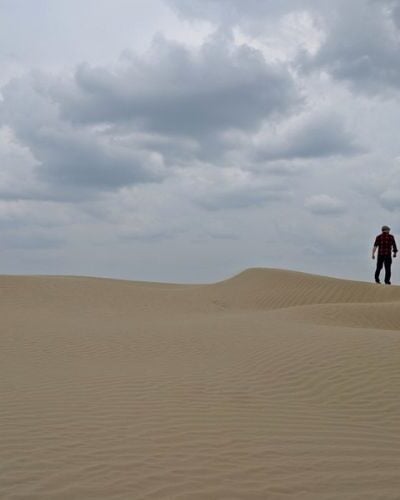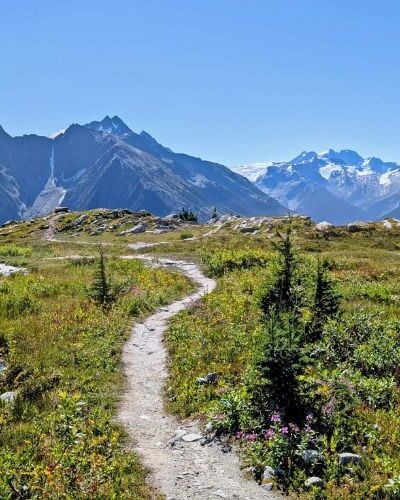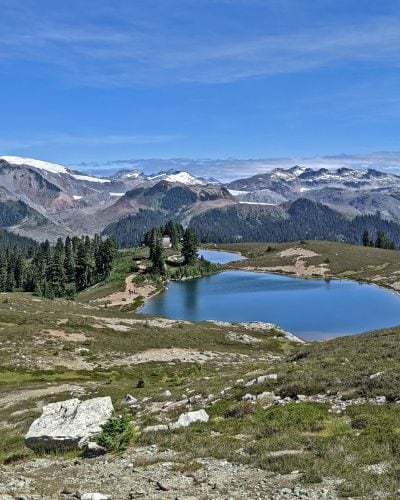The Othello Tunnels were carved through solid granite over a century ago, an engineering marvel that enables modern visitors to walk through the heart of the steep Coquihalla Canyon.
The canyon itself features a turquoise coloured river rushing below the old tunnels and trestle bridges, sculpting the steep, moss covered rock walls as it goes. This beautiful place is surprisingly easy to reach, though it can get busy at peak times.
The Othello Tunnels are the perfect road trip stop between the Lower Mainland and BC’s Interior yet are also a destination worth a separate journey. And thanks to the flat, wide path, the Othello Tunnels are accessible to nearly everyone.
Part of the Trans Canada Trail, this attraction is completely free to visit.

Having visited the Othello Tunnels several times over the years, our last trip was especially exciting, coming right after the tunnels reopened in early October 2025 (the first time in four years!) I love the mix of man-made history and natural beauty that this area offers.
This guide provides a full overview of the Othello Tunnels, covering their history, recent restoration, and key information for anyone planning a visit.
There are affiliate links in this post. If you make a qualifying purchase through one of these links, we may receive a small commission at no extra cost to you.

The Othello Tunnels and the Kettle Valley Railway (KVR)
The Othello Tunnels are part of what was the Kettle Valley Railway, which travelled over 500km from Hope to Midway, British Columbia via Penticton (our home town!)
Built between 1910 and 1916, the KVR primarily served mining interests in BC’s Southern Interior. At a time when officials worried about American miners moving in, the railway also reinforced Canadian sovereignty.
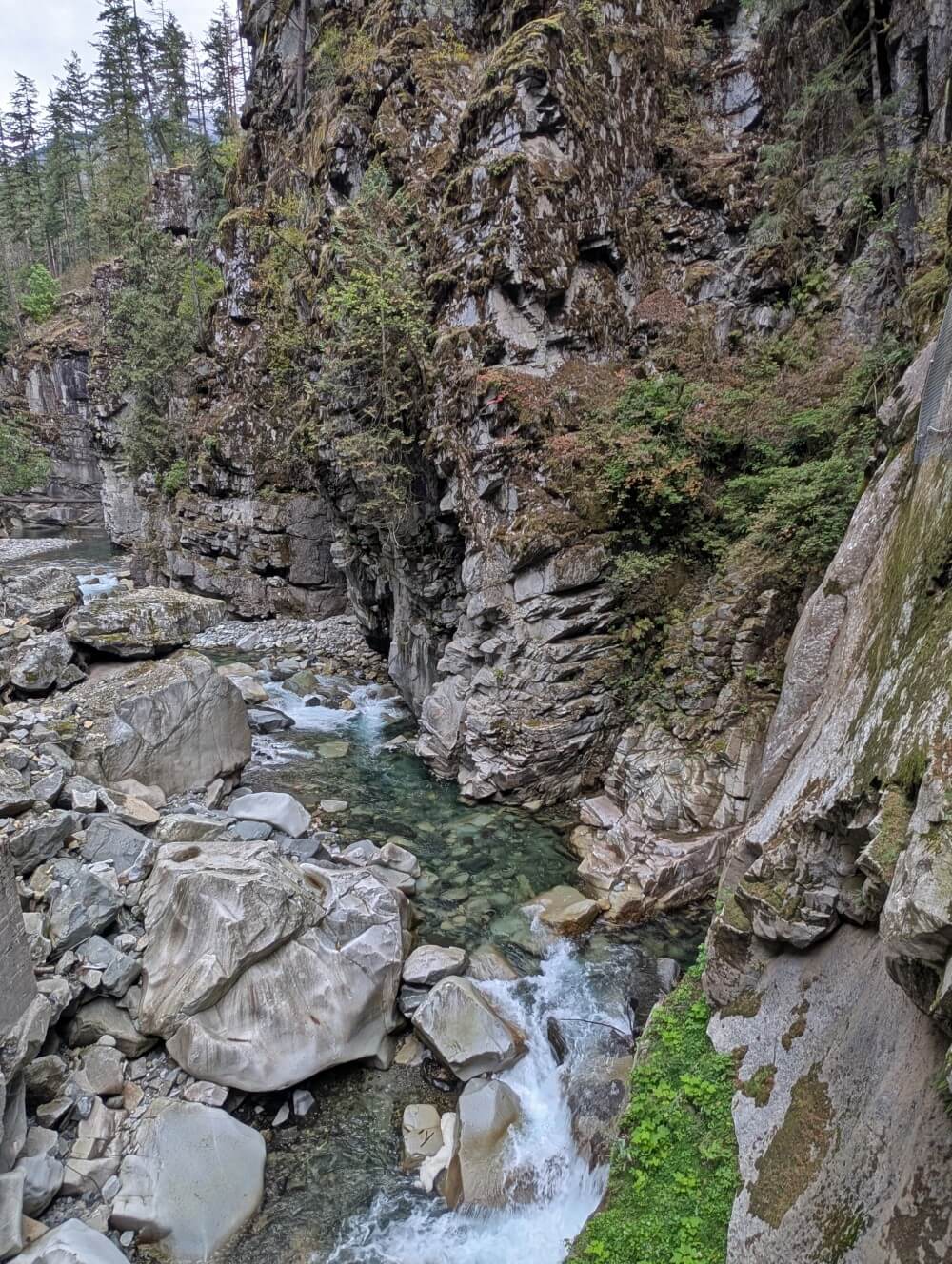
The catch? The route had a number of obstacles to overcome, with one of the biggest being the 90m (300 foot) deep Coquihalla Canyon.
While others advised constructing a bypass tunnel, chief engineer Andrew McCulloch boldly opted to carve a series of tunnels straight through the gorge.
This bold engineering achievement didn’t come cheap. At $300,000 in 1914 money, it is the most expensive mile of railway ever built in the world. The tunnels were constructed by European immigrants and American contractors.
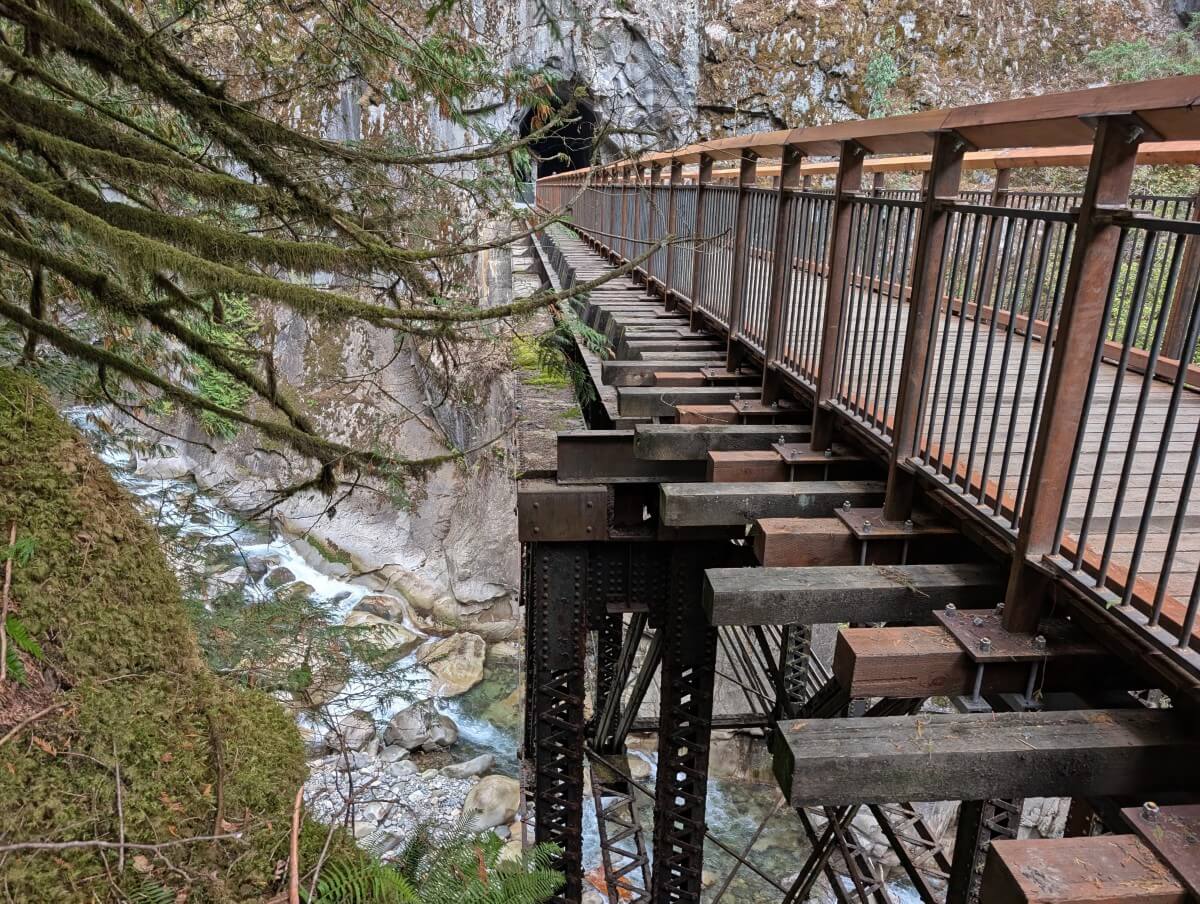
The KVR wasn’t in service all that long. In 1959, there was a washout on the line just north of the Othello Tunnels. This section was abandoned in 1961 and eventually became a provincial recreation area in 1986.
Significant sections of the Coquihalla Highway was built on the original KVR line. As you drive it, watch for the signs in the centre divide that mark where the railway stations used to be located.
Many of the stations boasted Shakespearan names (e.g. Romeo, Portia, Juliet, Lear), a nod to engineer Andrew McCulloch’s love of the Bard. Of course, Othello is another Shakespeare reference as well.

November 2021 flooding
In November 2021, the Coquihalla River rose well above its banks and flowed onto the KVR Trail and through the Othello Tunnels.
Facilities were washed out, rock and wood debris damaged the trail and filled the tunnels. Safety railings and rockfall protections were also compromised, leaving the area unsafe for visitors. The force of the debris even weakened and eroded bridge foundations.
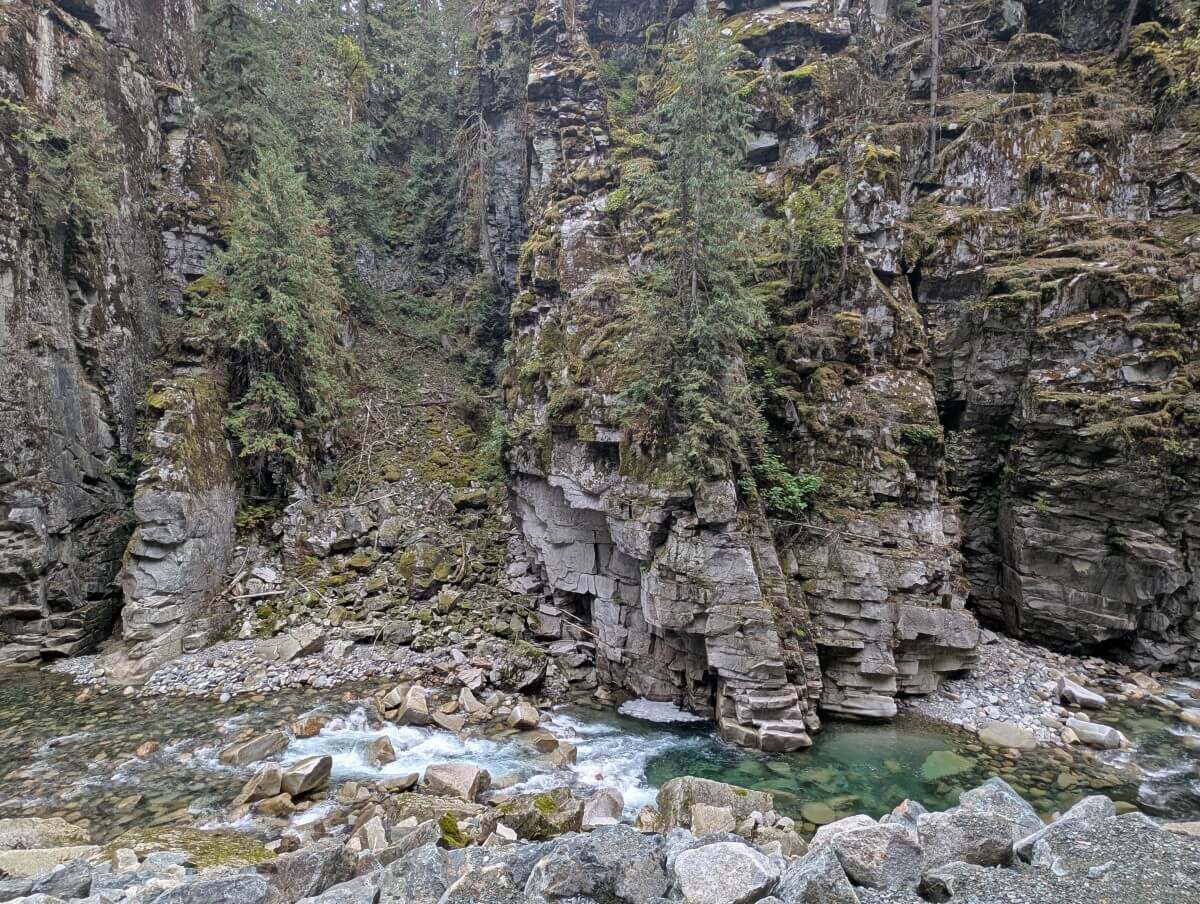
BC Parks’ recovery plan involved repairing all facilities ‘while adding climate resilient design principles wherever possible’ to help the tunnels withstand impacts from future weather events.
The Othello Tunnels partially reopened in July 2024, with more sections accessible in August and then June 2025. Finally, in early October 2025, all tunnels were open for the first time, but just for a short time before the annual winter closure at the end of October.

Visiting the Othello Tunnels
The Othello Tunnels are located just east of Hope, BC, close to exit 183 of Highway 5 (Coquihalla Highway). There is a large paved parking lot with picnic tables, outhouses and mountain views.
The walk through all four tunnels is 2.6km return (1.3km each way), with zero elevation change. Plan to spend an hour exploring.
The first section of the path is lined by forest, which soon opens up to reveal views of the adjacent Coquihalla River.
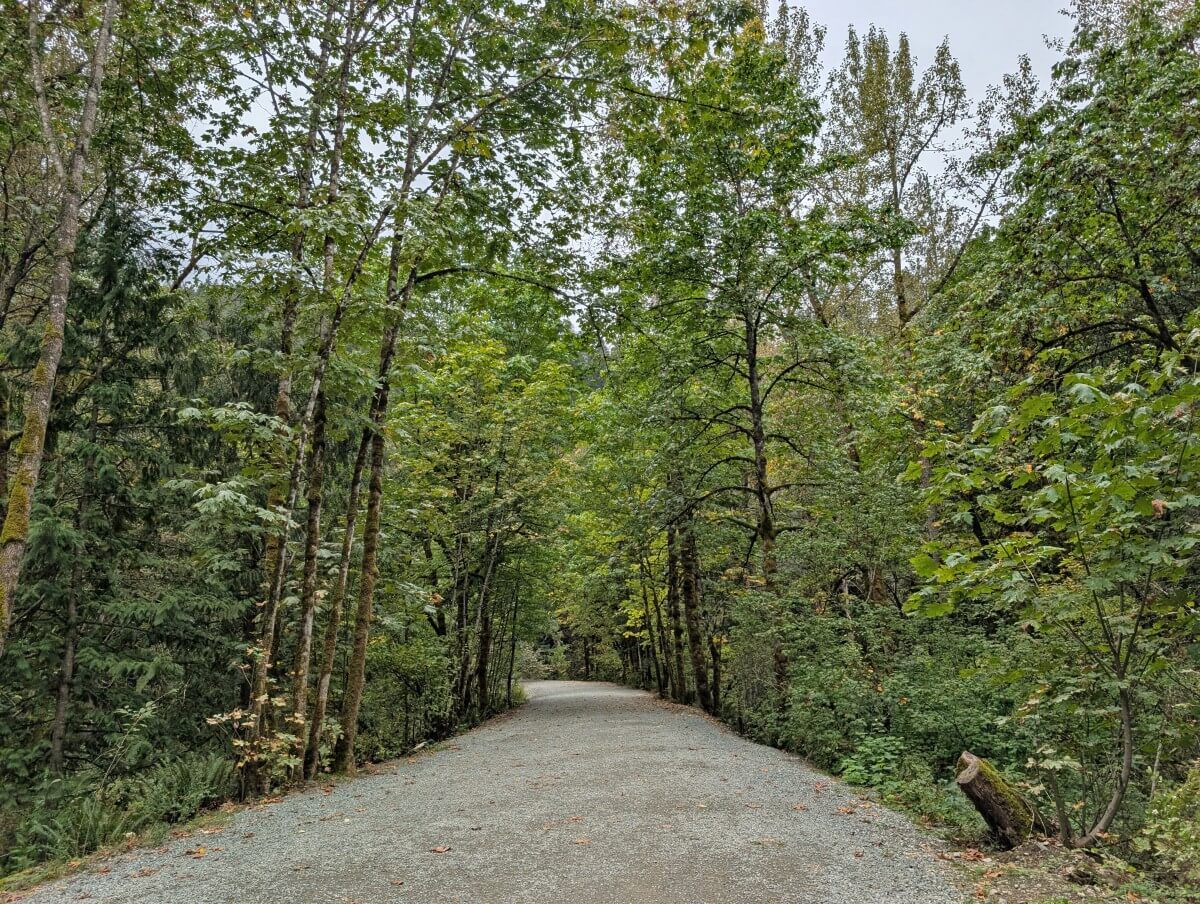
Soon after, the first Othello Tunnel appears. From this angle, it looks very dark. The first tunnel is the longest, at 170m. Some people use flashlights to see the ground better.
When entering, look up at the rugged rock walls. Most of the tunnels were built by hand with pick and shovel, with the help of some black powder.

There isn’t much of a gap between the first and second tunnels. Look to the left for a view of the Coquihalla River with many layers of mossy granite above. The second tunnel is very short – only 30m.
A bridge paves the way between the second and third tunnels. To the right, you can see a particularly narrow part of the canyon. In the fall, try to spot salmon swimming upstream.

The third tunnel is a bit unusual. It is 123m long with a series of big ‘windows’ near the entrance. On the other side is another bridge.
The metal trestle (structure) below the bridge is the same one that was constructed for the railway.
The fourth and final tunnel (84m long) has a rugged rock opening but transitions to a smooth brick interior. This is the end of the Othello Tunnels section – most people turn around here. The trail continues 3.4km through the forest to Kettle Valley Road.
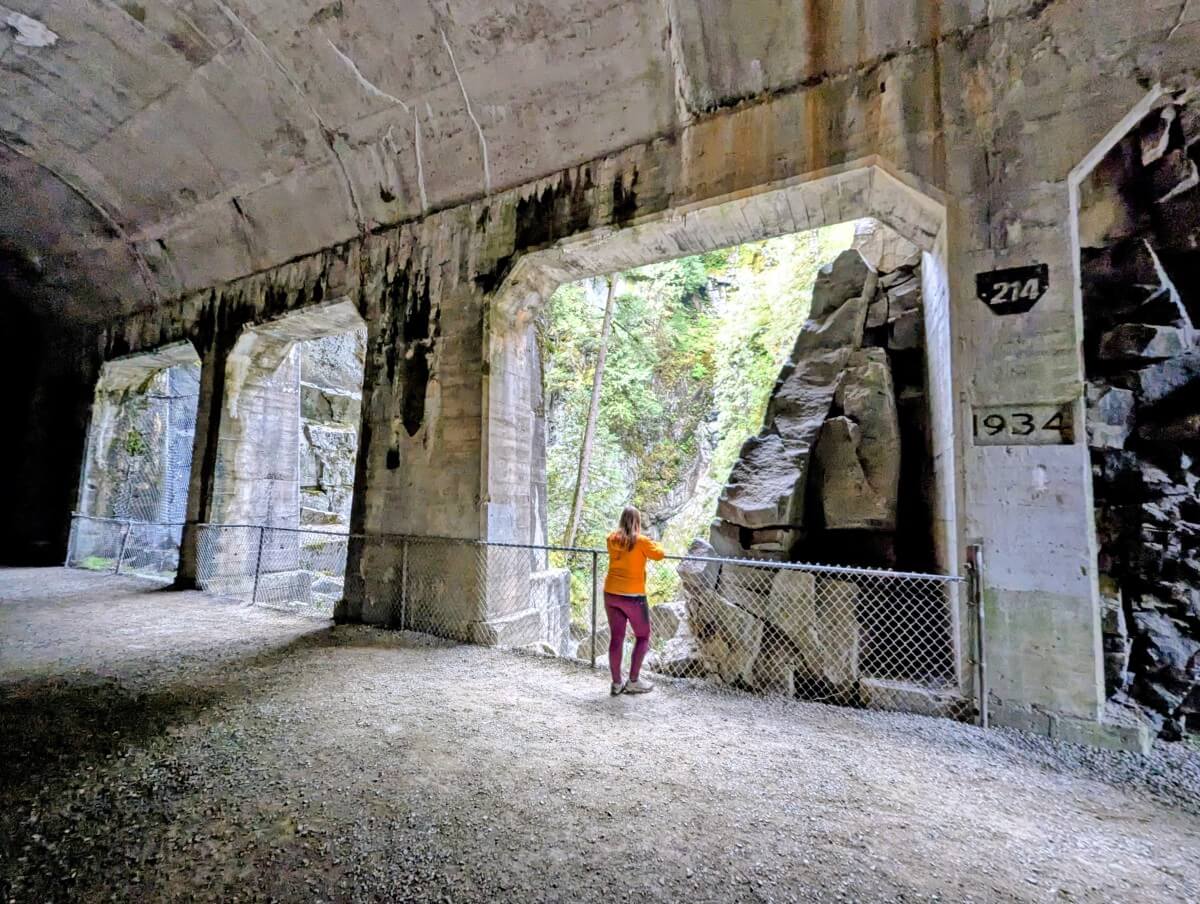
Othello Tunnels FAQs
If you have a question about the Othello Tunnels, it may be answered below!
Are the Othello Tunnels open?
All four Othello Tunnels fully reopened for the first time on 2nd October 2025. Access is available until 31st October and then the tunnels will be closed until ‘spring 2026.’
BC Parks will be finishing post-flood remediation work during the winter. Before November 2021, Othello Tunnels usually opened on 1st April. It is unknown yet whether BC Parks will open the tunnels on 1st April 2026 – I’m sure it will depend on the status of the repair work.

Why do the Othello Tunnels close in winter?
The Othello Tunnels are usually open April to October, with closures from November to March.
This area usually receives a lot of rain during the winter months, which causes the Coquihalla River to flow at a much faster and more powerful rate. Major flooding is a risk, as proven in November 2021. Falling rocks, ice and landslides are other hazards.
Recently, BC Parks has been using the winter closures to perform maintenance on the tunnels.
How much does it cost to visit the Othello Tunnels?
Nothing! The Othello Tunnels are free to visit.
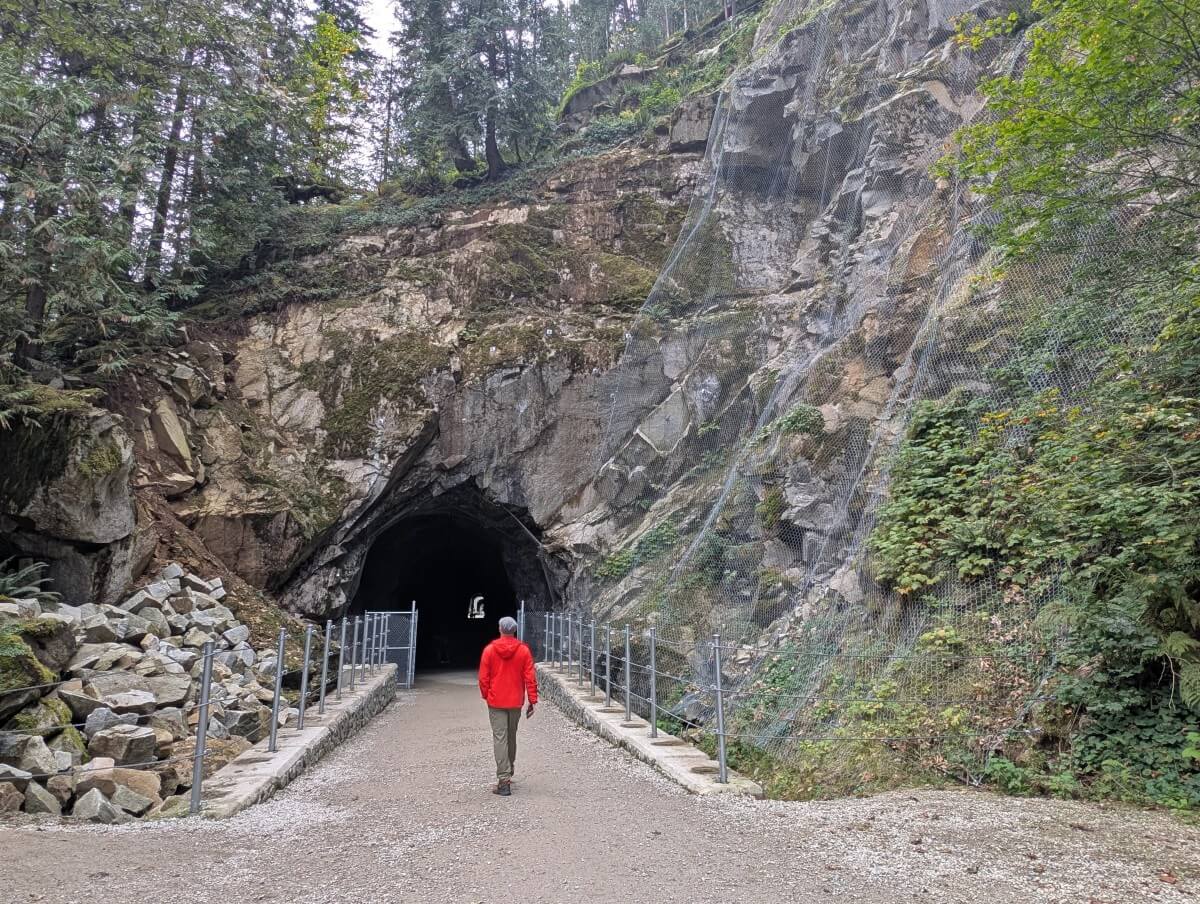
How many tunnels are there?
Despite having the official name of the ‘Othello-Quinette Tunnels’ (quinette meaning fifth in Latin), there are only four tunnels. The third tunnel has a section with a window, which gives the impression of an additional tunnel.
What is the path like?
The trail to the tunnels is wide and flat, made with packed gravel. Through the tunnels, the surface is mostly dirt with some uneven sections. If this is a concern, I’d recommend bringing a flashlight. The first tunnel is the longest and is pretty dark – you won’t be able to see your feet.
Can I park my RV at Othello Tunnels?
The Othello Tunnels parking lot has enough space for around 80 vehicles, with a handful of dedicated RV spots at the very end. There is a one-way system, which, in theory, should allow manoeuvrability for all but the biggest RVs.
At peak times, the parking lot completely fills up. This is more likely on weekends and 10am to 4pm on summer weekdays.

How long does it take to explore the Othello Tunnels?
I would plan to spend around one hour at the Othello Tunnels. The walk through all four tunnels takes around 15 to 25 minutes each way, depending on your speed.
Allowing for photos and reading of the interpretive signs, I would say one hour is a good amount of time to spend.
Can you bike the Othello Tunnels?
Yes, you can bike to the Othello Tunnels, but BC Parks asks cyclists to dismount when travelling through the actual tunnels. During busy times, there are usually too many people to ride safely anyway.

Can I bring my dog?
Dogs are permitted on a leash in Coquihalla Canyon Provincial Park. Please pick up after them. There are trash bins in the parking lot.
Can I swim at the Othello Tunnels?
No. There is no swimming allowed in the Coquihalla River as the currents are dangerously strong. Rescue is very difficult. People have died in the river here, most recently in July 2025.
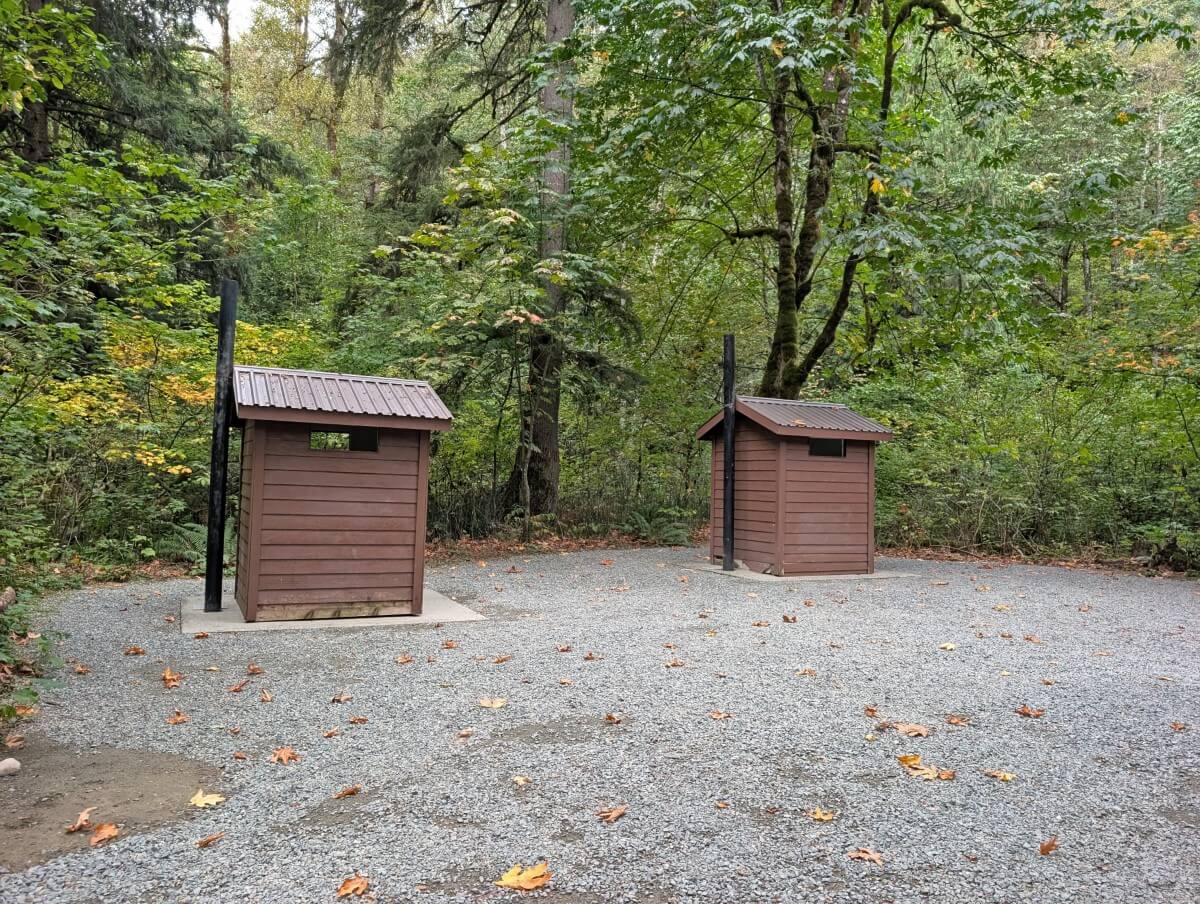
Where should I stay near the Othello Tunnels?
We love the Windsor Motel, soon to be known as the Inn the Mountains. It’s located in downtown Hope, about 15 minutes drive from the Othello Tunnels. Renovated in 2025, the rooms are exceptionally clean and modern, with lots of attention to detail.
Think USB ports by the side of the bed, a heated bathroom mirror, rainfall showerhead, blackout drapes, new mattresses and more. Most rooms have amazing mountain views.

Other things to do near Othello Tunnels
Hope has plenty of fun things to do, especially if you like to hike. I’ve written a whole post about our top picks but here’s a taster:
- Hike the Hope Lookout Trail for spectacular views of the town and surrounding mountains
- Explore the Sasquatch Caves
- Check out waterfalls – Flood Falls and Bridal Veil Falls
- Try local craft beers at Mountainview Brewing Co.
- Explore downtown Hope – coffee shops, Rambo filming locations, chainsaw carvings and more
- Visit beautiful Kawkawa Lake
- Go gold panning by the side of the Fraser River
In my opinion, Hope is well worth a weekend stay. It’s also great base for exploring Coquihalla Summit, Manning Park and the Fraser Canyon.

Other posts you may find helpful
The Best Things to Do in Hope, British Columbia
HBC Heritage Trail Hiking Guide
Vancouver to the Okanagan Valley Road Trip Guide: Best Places to Stop
Frosty Mountain Larches, Manning Park: Complete Hiking Guide
BC’s Best Backpacking Trips: Our Favourites and 60+ More Suggestions
17+ of the Best Day Hikes in British Columbia
Ultimate 2 Week Western Canada Road Trip from Vancouver
Check out these recently published articles next

One half of the Canadian/British couple behind Off Track Travel, Gemma is happiest when hiking on the trail or planning the next big travel adventure. JR and Gemma are currently based in the beautiful Okanagan Valley, British Columbia, Canada. Consider buying us a coffee if you have find any of our guides helpful!

